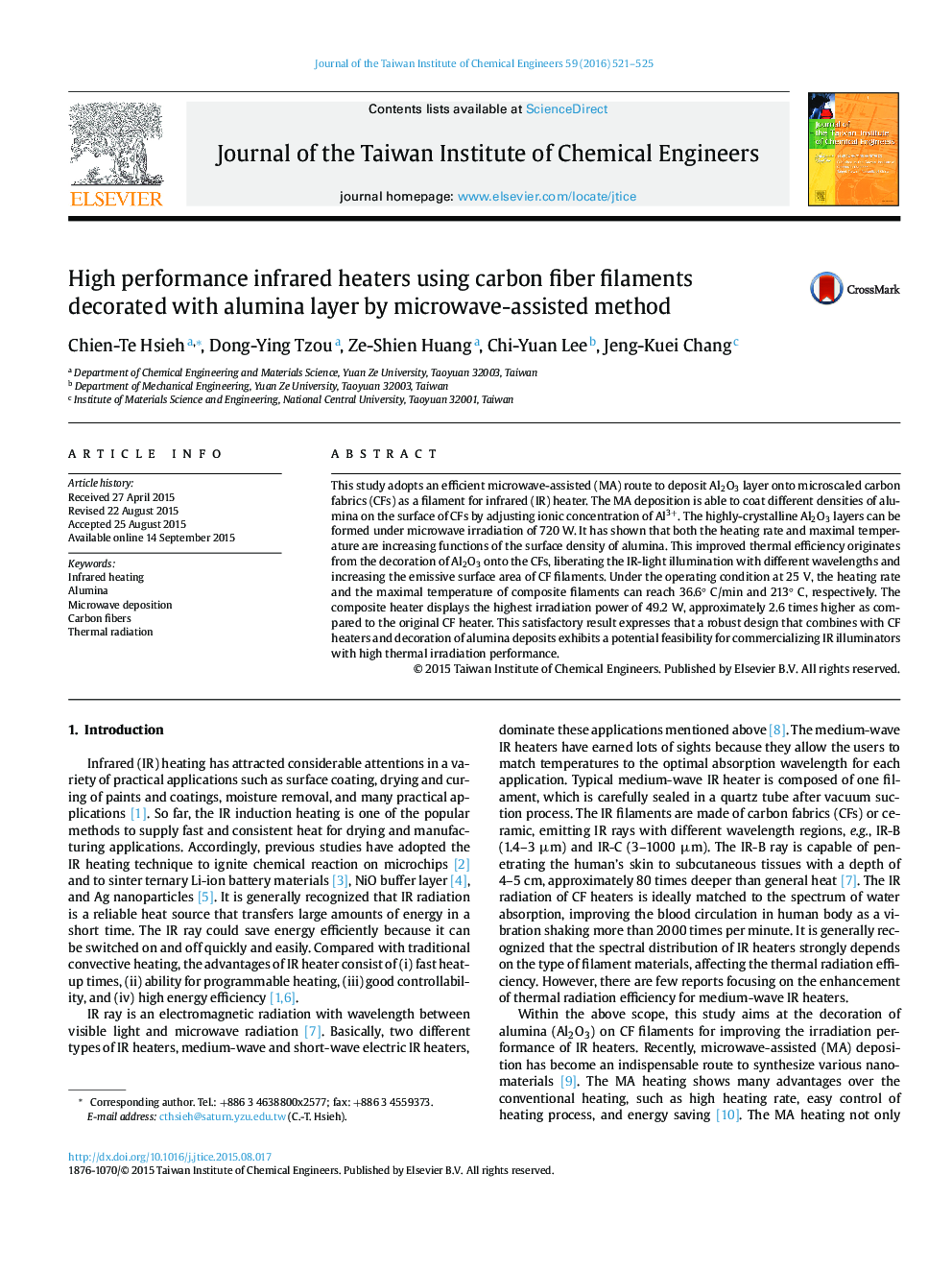| Article ID | Journal | Published Year | Pages | File Type |
|---|---|---|---|---|
| 690576 | Journal of the Taiwan Institute of Chemical Engineers | 2016 | 5 Pages |
•A microwave method was used to prepare alumina-coated carbon fabric (CF) filaments.•The heating rate and maximal temperature of alumina-coated filaments are improved.•The CF heater has high irradiation power, 2.6 times higher than original CF one.•The composite filaments show a great potential for a variety of IR applications.
This study adopts an efficient microwave-assisted (MA) route to deposit Al2O3 layer onto microscaled carbon fabrics (CFs) as a filament for infrared (IR) heater. The MA deposition is able to coat different densities of alumina on the surface of CFs by adjusting ionic concentration of Al3+. The highly-crystalline Al2O3 layers can be formed under microwave irradiation of 720 W. It has shown that both the heating rate and maximal temperature are increasing functions of the surface density of alumina. This improved thermal efficiency originates from the decoration of Al2O3 onto the CFs, liberating the IR-light illumination with different wavelengths and increasing the emissive surface area of CF filaments. Under the operating condition at 25 V, the heating rate and the maximal temperature of composite filaments can reach 36.6° C/min and 213° C, respectively. The composite heater displays the highest irradiation power of 49.2 W, approximately 2.6 times higher as compared to the original CF heater. This satisfactory result expresses that a robust design that combines with CF heaters and decoration of alumina deposits exhibits a potential feasibility for commercializing IR illuminators with high thermal irradiation performance.
Graphical abstractThis study adopts an efficient microwave-assisted route to deposit Al2O3 layer onto microscaled carbon fabrics (CFs) as a filament for infrared (IR) heater. This improved thermal efficiency originates from the decoration of Al2O3 onto the CFs, liberating the IR-light illumination with different wavelengths and increasing the emissive surface area of CF filaments.Figure optionsDownload full-size imageDownload as PowerPoint slide
